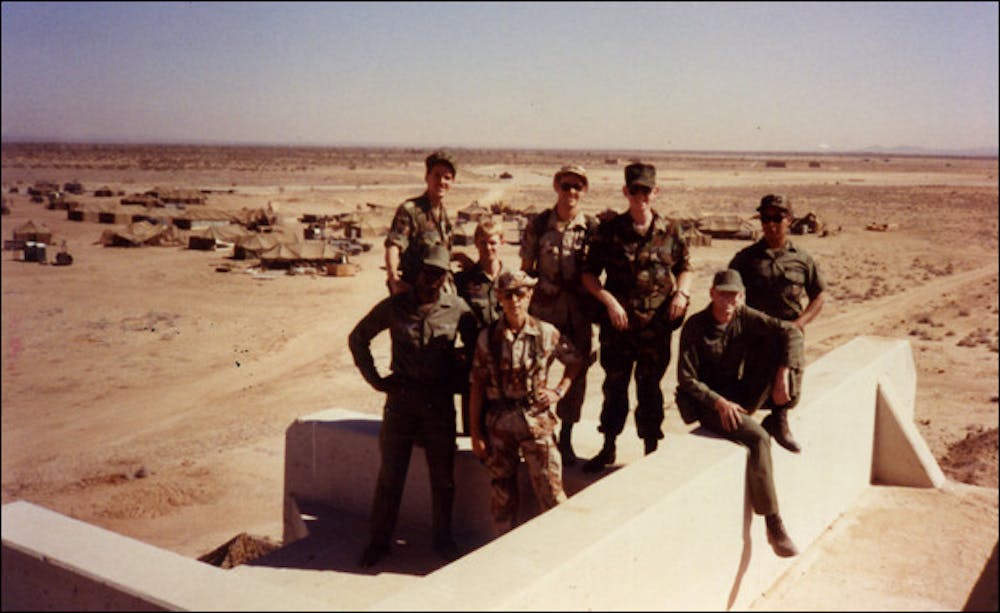Amid fears that ASU may close one if its campuses because of cuts in the state budget, some Polytechnic professors and alumni are reflecting on the strides they have made to turn a former Air Force base into a school of nearly 10,000 students.
Two years prior to becoming an official ASU campus in 1996, four faculty members taught weekend and evening classes on the old Williams Air Force Base, which would become the future Polytechnic campus.
Teaching hazardous-waste management certification courses and even offering a graduate degree program, they were Polytechnic pioneers, occupying the former Air Force classroom, building No. 571.
“It was easy for us to modify a few things and start teaching, except that we didn’t have a lab space,” said Danny Peterson, professor of practice.
“We cleaned out a storage area and turned it into a lab, but we didn’t have any running water in that room, so we had to cart our glassware and such to the women’s restroom to clean our lab equipment.”
The equipment in the first classrooms and lab came from donations from various companies, including Motorola and Boeing, in addition to ASU salvage yards.
The Polytechnic pioneers moved used lab furniture and equipment in their personal pickup trucks, built and installed cabinets in the classrooms and fixed the plumbing.
“There were mornings when I remember being on my hands and knees solving plumbing problems while dressed in a suit and tie for meetings that day,” said Thomas Schildgen, technology-department chair.
Today, the campus is commonly referred to as housing a special breed of faculty and students where there’s a sense of individualism mixed with camaraderie.
“The sense of community was very strong,” said Polytechnic alumnus Jeremy Art. “Students who go to ASU Poly don’t feel like a number. Their professors know their names. Walking across campus doesn’t feel like walking in a foreign land.”
Faculty, staff and students all point to the unique history of the campus for making them different from their Tempe counterparts.
“There would be a major void that’s being filled with the Polytechnic campus, especially the flavors of education that differ here than in Tempe,” Peterson said.
The tightly knit sense of community seen on the Polytechnic campus has been engrained in students, faculty and staff since the campus opened.
Chuck Backus, Polytechnic provost until 2004, encouraged bonding with the students and getting to truly know them. Backus and his family lived in the on-campus housing so he could submerge himself into campus life.
Paul Patterson, dean of the Morrison School of Management and Agribusiness, said he hopes the campus can continue to maintain its character as the campus gets larger.
“There’s something about [the] environment that nurtures that also,” Patterson said. “At Poly, the largest classroom seats only 100 students. Because of that, faculty [are] really able to get to know their students.”
Over the years, unique programs have grown at Poly, and some programs have there moved from Tempe. The nutrition, professional golf management, and exercise and wellness majors are now only offered at the Polytechnic campus. It also houses ASU’s also expanded nursing program.
“If the campus is closed, people need to know there are things here that can’t be replaced,” Peterson said. “Our aero program is on one of the finest airfields in the U.S. We couldn’t have it available if we were in Tempe. The state’s alternate emergency center’s site is on campus, our emergency management program couldn’t use that for courses anymore either.”
Although the campus has turned a corner and no longer looks like an Air Force base, it is trying its best to maintain a bit of the history.
“I see more of a university than a base,” Peterson said. “But one thing that always reminds me of the base is the water tower. It’s interesting how that’s become an icon of this campus — and it’s actually from the Air Force.”
Reach the reporter at afleisha@asu.edu.




